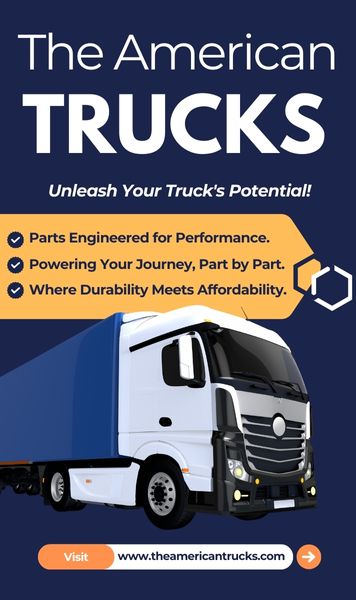
Truck Shock Absorbers for Comfortable Rides
In the world of trucking, ensuring a smooth and comfortable ride is paramount, not just for the driver’s comfort but also for the safety and longevity of the vehicle. One of the key components in achieving this comfort is the truck’s shock absorbers. Shock absorbers play a crucial role in minimizing the impact of road irregularities and maintaining tire contact with the road, thereby enhancing ride quality and vehicle control. This article delves into the importance of truck shock absorbers, how they work, types available, signs of wear, and tips for maintenance and replacement.
Understanding Shock Absorbers
Truck Shock absorbers, also known as dampers, are hydraulic devices designed to absorb and dampen shock impulses. Their primary function is to convert kinetic energy from the suspension movement into thermal energy, which is then dissipated. This process helps to control the movement of the suspension and springs, ensuring that the tires remain in contact with the road surface, thereby providing a smoother ride and better handling.
Importance of Shock Absorbers
- Ride Comfort: Shock absorbers play a critical role in smoothing out bumps and vibrations caused by uneven road surfaces. By dampening these impacts, they significantly enhance the driver’s comfort, reducing fatigue during long hauls.
- Safety: Properly functioning shock absorbers ensure that the tires remain in contact with the road, which is essential for maintaining control of the vehicle. This is particularly important during emergency maneuvers or when driving on rough terrain.
- Vehicle Longevity: By absorbing and dissipating the energy from road impacts, truck shock absorbers help to reduce wear and tear on other suspension components and the chassis, extending the overall lifespan of the truck.
How Shock Absorbers Work
Truck Shock absorbers work through a process called damping. Inside a typical shock absorber, there is a piston that moves up and down through a cylinder filled with hydraulic fluid. When the truck encounters a bump, the piston forces the fluid through tiny holes and valves, creating resistance. This resistance converts the kinetic energy of the suspension movement into heat, which is then dissipated. This process slows down and controls the movement of the suspension, ensuring that the truck’s wheels remain in contact with the road surface.
Types of Shock Absorbers
- Twin-Tube Shock Absorbers: These are the most common type found in trucks. They consist of two cylinders: an inner one containing the piston and hydraulic fluid, and an outer one that serves as a reservoir. Twin-tube shocks are known for their durability and ability to provide a smooth ride.
- Monotube Shock Absorbers: Unlike twin-tube shocks, monotube shocks have a single cylinder that houses both the piston and the hydraulic fluid. They offer better performance and heat dissipation, making them ideal for heavy-duty and off-road applications.
- Coilover Shock Absorbers: These shocks come with a coil spring encircling the shock absorber. They provide excellent handling and are often used in high-performance trucks. Coilover shocks are adjustable, allowing for fine-tuning of the ride height and stiffness.
- Gas-Charged Shock Absorbers: These shocks incorporate pressurized nitrogen gas to reduce foaming and cavitation, which can occur when the hydraulic fluid is agitated. Gas-charged shocks provide better damping performance and are suitable for trucks that frequently encounter rough terrain.
Signs of Worn Shock Absorbers
Recognizing the signs of worn or failing truck shock absorbers is crucial for maintaining ride quality and safety. Here are some common indicators:
- Excessive Bouncing: If the truck continues to bounce after hitting a bump, it’s a clear sign that the truck shock absorbers are not functioning properly.
- Nose Diving or Rear Squatting: During braking, if the front of the truck dives down or the rear squats excessively, the shocks may be worn out.
- Uneven Tire Wear: Worn shock absorbers can cause uneven tire wear, as they fail to keep the tires in proper contact with the road.
- Fluid Leaks: Visible fluid leaks from the shock absorbers indicate that the seals are worn and the shocks need replacement.
- Vibrations: Excessive vibrations in the steering wheel or the truck’s cabin can be a sign of worn shocks.
Maintenance and Replacement Tips
To ensure the longevity and performance of your truck’s shock absorbers, follow these maintenance tips:
- Regular Inspections: Include shock absorber inspections in your regular maintenance routine. Look for signs of wear, leaks, and damage.
- Timely Replacement: Replace truck shock absorbers as recommended by the manufacturer or when signs of wear become apparent. Delaying replacement can lead to further damage to the suspension system.
- Quality Parts: When replacing shock absorbers, opt for high-quality parts that meet or exceed OEM specifications. Investing in quality shocks ensures better performance and durability.
- Proper Installation: Ensure that shock absorbers are installed correctly, following the manufacturer’s guidelines. Improper installation can lead to poor performance and premature wear.
- Balanced Maintenance: Maintain other suspension components, such as bushings and springs, to ensure the overall system functions optimally. Neglecting one part can put additional strain on the shock absorbers.
Truck shock absorbers are vital for providing a comfortable ride, ensuring safety, and extending the vehicle’s lifespan. Understanding how they work, recognizing signs of wear, and performing regular maintenance can keep your truck running smoothly. By investing in high-quality shock absorbers and adhering to proper maintenance practices, you can enhance your trucking experience, making long hauls more comfortable and safe. Remember, a smooth ride is not just about comfort; it’s about maintaining control and ensuring the longevity of your truck.
For detailed information, you can contact us at Shock Absorbers
Check out our other Truck Shock Absorbers Parts.
Check out our other Truck Body Parts.




